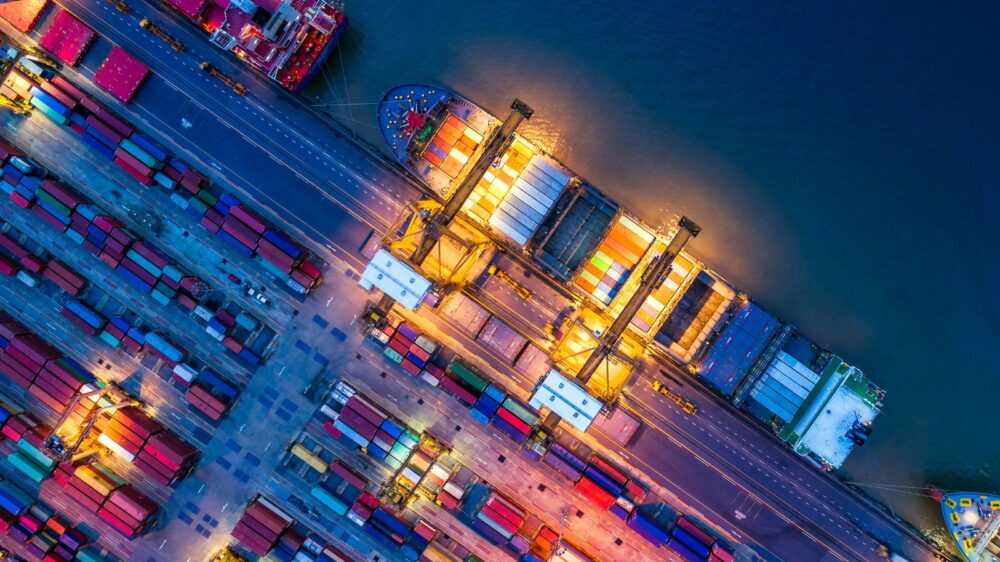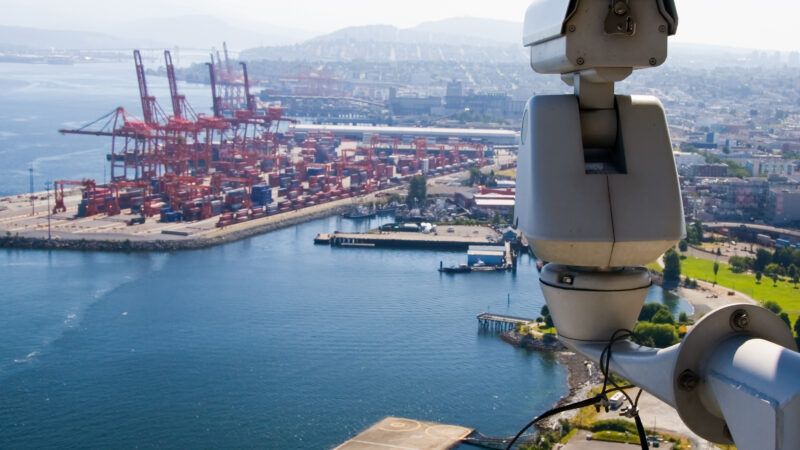 Technologies in the port environment offer great opportunities, but also pose complex challenges. [Image of Getty Images]
Technologies in the port environment offer great opportunities, but also pose complex challenges. [Image of Getty Images]
Trends 2019: The six challenges facing SmartPorts according to CIOs at large international ports
What impact will technology have on port management processes? What role will data play in decision-making? And, how will these changes affect security? Chief Information Officers (CIOs) at large ports around the world give their opinion on the challenges of the Smart Port model.
 Technologies in the port environment offer great opportunities, but also pose complex challenges. [Image of Getty Images]
Technologies in the port environment offer great opportunities, but also pose complex challenges. [Image of Getty Images]
This past December, the members of ChainPORT held their fourth meeting at the Port of Barcelona. The event featured presidents and general managers of major international ports, although the real stars were the CIOs and experts in digital strategy. Some of these included Piet Opstaele (Port of Antwerp), Lance Kaneshiro (Port of Los Angeles), Paul Walter (Port of Rotterdam), Daniel Oliver (Port of Montreal), Chin Yong Ko (Port of Singapore), Dr. Sebastian Saxe (Port of Hamburg) and Huang Heng (Port of Shanghai). The six challenges that most concerned the CIOs at the events in Barcelona are explained below.
The Smart Port model
The concept of ‘smart ports’ is based on transforming sea transport and logistics by applying digital technology. It must be noted that this is a tool to facilitate a global change. Smart Ports must, in addition to intelligent and connected, be more sustainable, efficient and socially responsible ports. It is a long-term transformation strategy that will impact all areas of sea transport and bring technology like automation, driverless vehicles, Blockchain and the Internet of Things to port operations. By gradually adopting these innovations, ports will be able to “offer non-stop service, 24 hours a day, seven days a week, faster and more efficiently,” says Catalina Grimalt, CIO of the Port of Barcelona.
Cybersecurity
Connecting people, companies and institutions to objects and vehicles will lead to an exponential increase in the amount of data circulating between platforms and ports. So, security is one of the most noteworthy challenges. We not only have to ensure that this massive flow of data can be transferred quickly and effectively, this must also be done in a standardised, totally secure manner. This is one of the main concerns expressed by Lance Kaneshiro, CIO at the Port of Los Angeles: “All of the port stakeholders are going to start generating and sharing a lot more data in different places. This data now comes in a variety of formats. We need to standardise these formats so the data can flow between different ports and platforms,” he explained during his visit to Barcelona. “Digitalisation processes will lead to an increase in our cybersecurity needs, which must be handled not only on individual level but also as a system, as part of a series of interconnected networks.”
The concept of ‘smart ports’ is based on transforming sea transport and logistics by applying digital technology. It must be noted that this is a tool to facilitate a global change.
Applications based on big data
This data boom could be used to improve processes and make them more efficient. In fact, data analysis in conjunction with deep learning can lead us to create predictive, prescriptive systems that anticipate responses and incidents and help interest groups with decision-making. This learning would particularly benefit ports, companies and institutions that are clearly committed to digitalisation. Implementing this type of applications, however, requires a cultural shift in the sector, with everyone involved agreeing to share data in a transparent, secure manner, as Grimalt pointed out at the latest ChainPORT meetings.
Blockchain
According to the experts, Blockchain technology is destined to change a whole host of sectors: from making financial operations more secure and reliable to developing Smart contracts. The latter refers to contracts that are self-executing (think, for example, of an automated process to exchange goods or services between companies), decentralised, transparent and immutable thanks to this technology.
In the port management arena, on PierNext we have already discussed the changes this technology could lead to in the future of Port Community Systems. Likewise, Blockchain (associated with geographic information systems and the Internet of Things) could be applied for safe monitoring of cargo inside containers and would be particularly useful if that cargo is perishable or must be kept at specific conditions (for example, refrigerated containers).
Data analysis in conjunction with deep learning can lead us to create predictive, prescriptive systems that anticipate responses and incidents and help interest groups with decision-making
Geographic information systems with value-added
Because, although it seems obvious, knowing exactly where objects or vehicles are at any given time is crucial to port management. So, developing systems based on geolocation could help speed up processes and change the port dynamic: from detailed monitoring of cargo status to the option to oversee vehicles, allowing certain tasks to be automated. This is the case, for example, of the use of unmanned vessels in the Port of Antwerp, as explained CIO Piet Opstaele. At the Belgian port, these boats are used to fathom the depths of the port. “This way, we can have measurements in nearly real time, 24 hours a day and at little cost, thanks to a little automated boat with sensors.” Furthermore, this vessel has hardly any carbon footprint, as it is equipped with solar panels that provide all of the power it needs. Opstaele explains how this technology could reactivate an old tradition in the Netherlands: transporting goods on the canals, in an affordable, sustainable manner.
Traffic management systems
The commitment to intermodal transport can have negative side effects for the port surroundings. Containers arriving to and leaving the terminals can increase traffic jams and, therefore, lead to less efficient transport and more pollution around the port. Gate Appointment Systems have been the response many port authorities have used to address this issue. The Port of Montreal is among the most recent, as we learned from CIO Daniel Oliver. “Using motion sensors, cameras that ‘read’ licence plates and RFID technology, we can monitor lorry arrivals, exits and operations. This real-time information is shared with drivers and transport companies, so they can see the real traffic conditions at the Montreal container terminals at any given time. This tool helps them make decisions and, in fact, even helps us reduce our carbon footprint.”
See these and other opportunities the CIOs at international ports have detected in this video.






